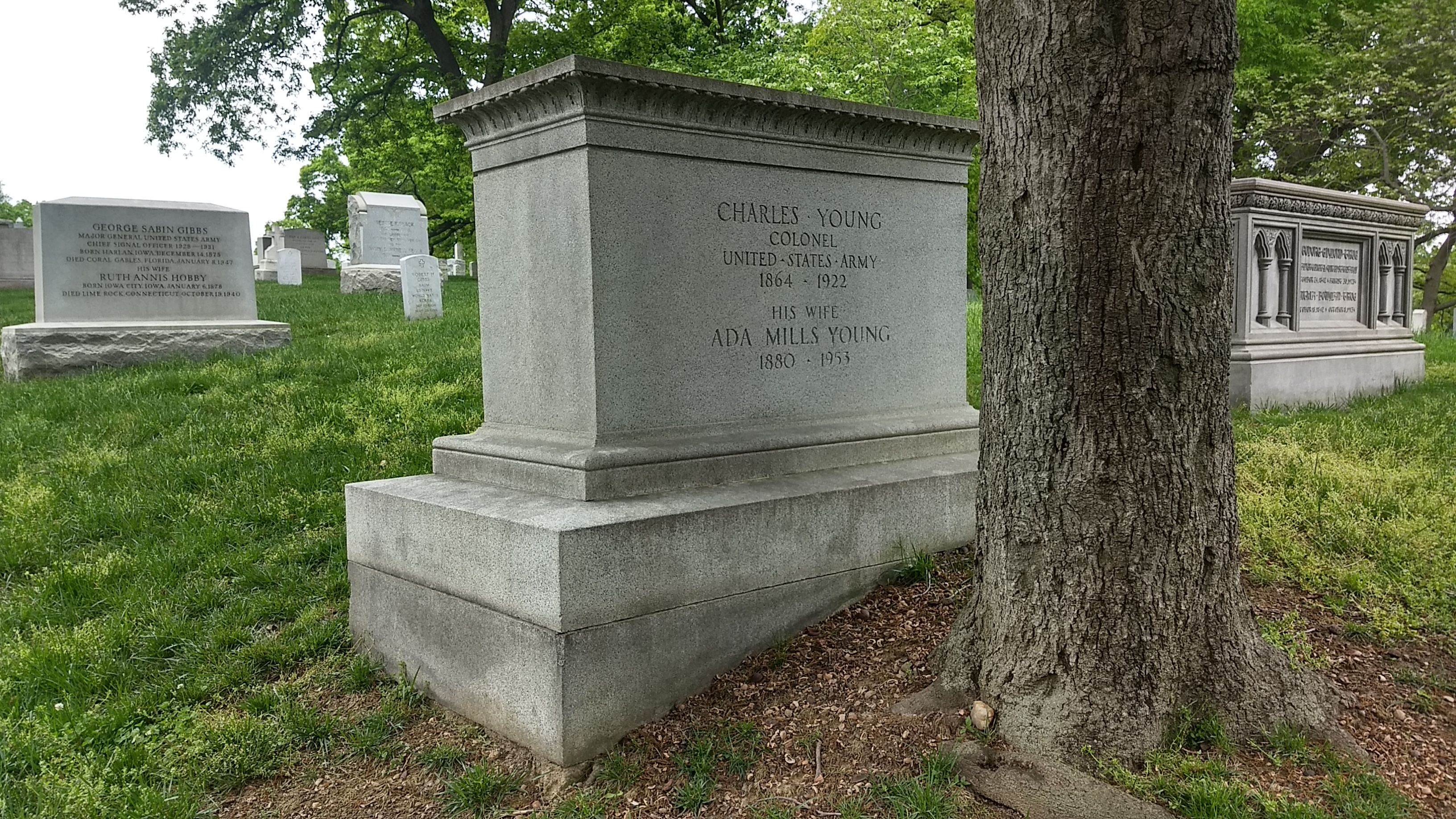 When the Arlington Memorial Amphitheater was finished in 1920, it began to host funerals for famous service members as well as national observances such as Memorial Day. One of the first funerals held in the Amphitheater was for Colonel Charles Young (1864-1922), the first African American colonel in the U.S. Army.
When the Arlington Memorial Amphitheater was finished in 1920, it began to host funerals for famous service members as well as national observances such as Memorial Day. One of the first funerals held in the Amphitheater was for Colonel Charles Young (1864-1922), the first African American colonel in the U.S. Army.
Charles Young was born to enslaved parents on March 12, 1864 in May’s Lick, Kentucky. His father Gabriel escaped to freedom in Ohio in 1864 and in February 1865 joined the 5th Regiment, U.S. Colored Heavy Artillery. Charles grew up in Ripley, Ohio, where he excelled in academics and spent two years as a teacher before he took his father’s advice and applied to the United States Military Academy at West Point. Even though Charles earned the second highest score on the entrance exam in 1883, he was initially not selected to enter the academy; he matriculated the following year when the first candidate dropped out. Despite having to repeat his plebe year due to failing mathematics and enduring discrimination, Young excelled at languages, graduated and earned his commission in 1889.
During his subsequent military career, Young served predominantly with segregated African American troops of the 9th and 10th Calvary Regiments, segregated units that were also known as the “Buffalo Soldiers.” In 1894, Young’s academic talent and skill at languages landed him detached service assignment at Wilberforce University, the first college to be owned and operated by African Americans, where he taught military science and tactics as an active duty officer. During the Spanish-American War (1898), he was promoted to major and given command of the 9th Ohio Infantry Regiment.
In 1903, Young received an appointment as the superintendent of Sequoia National Park. The U.S. military supervised the park before the creation of the National Park Service, and Young became the first African American to hold such a post. During the summer of 1903, Young and his soldiers constructed roads and trails to the famous landmarks; according to the National Park Service, they completed more work in one summer than had been done during the previous three years before them.
Young’s aptitude for languages led him to serve in diplomatic posts as a military attaché to Haiti, the Dominican Republic and Liberia, as well as two tours in command of U.S. troops in the Philippines during the Philippine-American War (1899-1902). He also commanded a squadron of the 10th Cavalry during the campaign against the Mexican revolutionary leader Pancho Villa in 1916. The outbreak of World War I led to the possibility that he would be further promoted to become the first African American brigadier general. However, in 1917, Young received word that he had high blood pressure and other medical issues. The Army mandated his medical retirement in July 1917 and promoted him to colonel in recognition of his service.
Young protested this decision, and in an effort to show that he was fit for duty, in June 1918 he mounted his horse in Wilberforce, Ohio and rode to Washington, D.C. The Army reinstated him and sent him to training facilities to train African American recruits during World War I. Young returned to diplomatic service in 1919 as an attaché in Liberia. He died there of nephritis, a condition of inflammation of the kidneys, on January 8, 1922, at the age of 57. In 1923, after over a year of “red tape” and diplomatic cables requesting the return of his remains, his body was repatriated to the United States. On June 1, 1923, Young became the fourth person honored with a funeral inside the Arlington Memorial Amphitheater. Although burials at Arlington National Cemetery were racially segregated at the time, Young's rank as a colonel allowed him to be buried in Section 3, an officers’ section.

Young’s widow, Ada Mills Young, died in 1953 and was buried with him, but the headstone was not updated with her name until 2018. Private markers like Young’s were once allowed in older sections of Arlington National Cemetery, although family members were responsible for making any changes to these headstones, including the addition of names after the burial of a spouse or dependent.
Charles Young faced adversity and discrimination throughout his long career. His example, initiative and persistence paved the way for future generations of African American leaders in the armed forces. We commemorate Colonel Young, one of just a few notable service members to be honored with a funeral inside Memorial Amphitheater, as we celebrate the 100th anniversary of the dedication of the Amphitheater.
Photo, top: National Archives and Records Administration